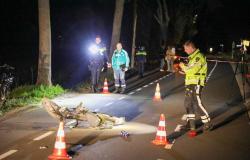
High workload, waiting lists, bureaucracy: these are also important bottlenecks in youth protection. Suzanne Bos from Youth Protection North explains how it works. “I want to spend more time with my young people and less time behind the computer.”
Youth protector and probation officer Suzanne Bos of Youth Protection North in Groningen and Drenthe has noticed that all the hassle in her profession has increased considerably. She has been doing this work for about eighteen years now and especially since the introduction of the Youth Act in 2015 (municipalities then became responsible for youth care), she has been increasingly involved in consultation with municipalities.
“They sometimes point to each other for financing: the municipality where the child comes from should pay for it, according to the municipality where the child is going. But also the other way around.”
Despite the fact that the number of children per youth protector has now been reduced, the bureaucracy does not always experience this as such. “I have been busy all morning typing the same text three times in different reports to the court for an extension of a supervision order, a care application and a preparation form for a team meeting. I could have also spent all that time on the young people,” says Bos. “Yes, we have to be accountable, but this is a lot.”
Last autumn, youth protectors started a public campaign called ‘What would you do?’. By presenting their dilemmas to the public, they draw attention to their work. Read the example of twelve-year-old Rick in this story.
Contested divorces
Bos notices that matters have become more complicated – especially in the youth probation service. “In the past, cases involved stealing a Twix, but now they involve much more serious facts, which sometimes also involve victims.”
A lot is also changing within youth protection. “In 80 percent of cases we are dealing with complex divorces,” she estimates. “It is good that more attention is being paid to this, because these children are in trouble. Settlement is complicated. You become a mediator between parents, while we should focus on the children themselves.”
Nowadays there are fewer out-of-home placements than before, says Bos. “Because an out-of-home placement is also traumatic for a child, we try to solve it at home where possible. And also because there are fewer and fewer foster care places where children can go.”
From pillar to post
Something that Bos mainly encounters: are the waiting lists and the changed youth care organizations. “In many places you can no longer live for years without necessarily having to do ‘something’, such as therapy. Nowadays it is six months of treatment and then you move on to the next institution.”
The bottom line is that young people are constantly moving from place to place and Bos cannot always arrange the help that children and young people actually need. “I’m visiting all the places much more than before. Sometimes I register young people everywhere in the hope that there will be a place somewhere quickly.”
How wonderful is it that, despite all the setbacks, you see a child from a difficult situation develop into a success story? “I really like the children. The click you have with them makes this very rewarding work,” Bos emphasizes. “It is great to be able to contribute to the positive development of children and their parents. When you later hear how successful some young people have become in all kinds of areas, then that is the cherry on the cake for me.”
What is youth protection?
Youth protection is mandatory assistance in raising children. If voluntary help is not successful (such as help from a social team from the municipality), the juvenile court can impose three measures that will send the family to youth protection.
With a supervision order, the child remains at home and the family is assigned a family guardian. With an out-of-home placement, the child is temporarily placed elsewhere, such as in a foster family or institution. And a termination of parental authority means that the child has been living away from home for at least a year and a half and that it is no longer possible to return it.
Tags: Youth protectors change spend time young people spend time front computer





